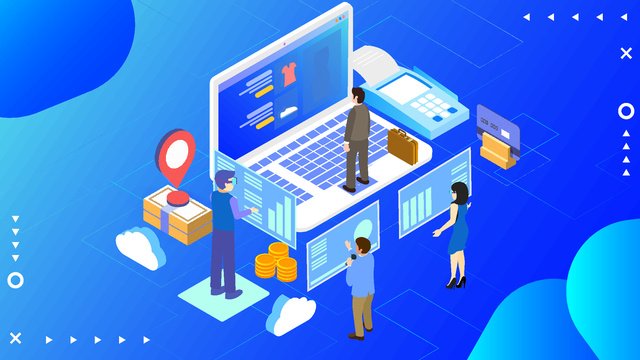In trendy information-driven panorama, information and harnessing the power of information streaming is essential. Apache Kafka stands as a outstanding determine in this realm, facilitating real-time records processing that is transforming industries. This newsletter is your guide to transitioning from a beginner to a Kafka hero in three straightforward steps. Let’s embark on this journey together, as we discover the significance of Apache Kafka, navigate its center ideas, set up an surroundings, and dive into arms-on learning with practical examples.
Table of Contents
- Introduction
- Step 1: Building a Strong Foundation
- Step 2: Setting Up Your Kafka Environment
- Step 3: Hands-On Learning with Practical Examples
- Conclusion
- Further Resources
Introduction
Setting the Stage: Understanding the Importance of Apache Kafka
In a world in which every millisecond counts, Apache Kafka emerges as a beacon of green data managing. It’s now not pretty much shifting records; it is approximately doing so in real time, with reliability and scalability. Corporations, from e-commerce giants to financial establishments, depend upon Kafka’s prowess to keep up with the ever-accelerating facts glide. Truly, Apache Kafka is the linchpin that continues the contemporary records atmosphere intact.
Demystifying Kafka: A Brief Overview for Beginners
For the ones new to the sector of Kafka, envision it as a distributed streaming platform designed to manage the flood of statistics generated by means of numerous applications and systems. It’s not your normal message queue; it’s a dynamic, fault-tolerant, and excessive-throughput records motorway. Kafka’s architecture and abilities may to begin with appear complicated, however fear no longer – we are right here to manual you thru its intricacies in the best manner feasible.

Step 1: Building a Strong Foundation
Understanding Data Streaming Concepts
What is Data Streaming and Why Does it Matter?
Believe a river of statistics flowing with no end in sight, and you’re dipping your cup into it to drink exactly what you need at any moment. This analogy mirrors information streaming. It’s about processing and delivering information in movement, as it’s created, making it to be had for fast intake. Traditional batch processing, alternatively, collects facts over a duration and methods it in chunks. In our rapid-paced global, statistics streaming guarantees insights are received in real-time, which could make a world of difference in essential choice-making.
Exploring Real-time Data Processing vs. Batch Processing
While batch processing has its deserves, real-time information processing is the paradigm of choice while time-touchy movements are paramount. The potential to react swiftly to converting situations and consumer behaviors is critical for trendy programs. Apache Kafka lets statistics be ingested, processed, and introduced in real-time, enabling corporations to stay agile and responsive.
Apache Kafka and Apache Spark are two powerful open-source technologies that are often used together to build real-time data processing pipelines and applications. Kafka serves as a reliable and scalable data streaming platform, while Spark provides a fast and flexible data processing framework.
The Role of Kafka in the Data Streaming Landscape
Photo Kafka because the orchestrator of the records streaming ballet. It takes on the function of a middleman among statistics producers and customers, making sure seamless verbal exchange among them. As statistics pours in from numerous resources, Kafka neatly organizes and stores it in a fault-tolerant manner, equipped to be accessed by using extraordinary applications, making it a cornerstone of the present day statistics streaming panorama.
Stay tuned for element 2 of this article where we can delve into putting in place your Kafka environment, and discover the important additives that make Kafka tick.
Key concepts and Terminology
Brokers, Topics, Partitions, and Producers: Decoding Kafka’s Elements
At the coronary heart of Kafka’s architecture are agents, that are servers chargeable for dealing with the incoming statistics streams. Subjects function the channels via which information flows, performing as labeled containers. Interior these topics, records is in addition divided into walls, taking into consideration green distribution and parallel processing. Manufacturers, like diligent couriers, deliver messages to precise subjects, making sure that information is properly channeled.
Messages and Records: Navigating Data Flow in Kafka
Think of messages as the constructing blocks of Kafka’s statistics transport system. Those messages are similarly organized into data, each with its own precise identifier and timestamp. Know-how how messages and information paintings together is vital for comprehending the seamless float of information within Kafka’s environment.
Consumers and Consumer Groups: How Data is Consumed in Kafka
On the flip aspect, purchasers play a essential function in extracting statistics from Kafka’s subjects. These packages join specific subjects and consume messages at their personal tempo. Consumer agencies beautify performance with the aid of distributing the load across a couple of customers, ensuring that no piece of statistics is going neglected. This dynamic interaction among manufacturers, subjects, and customers bureaucracy the backbone of Kafka’s streaming ecosystem.
Step 2: Setting Up Your Kafka Environment
Installing and Configuring Kafka
Choosing Between Manual Installation and Docker
Setting up Kafka entails an essential preference: guide set up or Docker deployment. Manual installation offers finer manage over configurations and dependencies but may require extra technical prowess. Docker, however, simplifies the process by using encapsulating Kafka and its dependencies in remoted containers. Your choice depends to your familiarity with these tactics and the level of manipulate you are trying to find.
Editing Configuration Files: Essential Settings to Know
Kafka’s behavior can be tailored through configuration files. Those documents allow you to outline parameters consisting of the wide variety of walls, the retention length of messages, and the dealer’s address. Navigating those settings empowers you to fine-track Kafka’s overall performance to in shape your use case’s requirements.
Creating Your First Kafka Cluster
Single Broker vs. Multi-Broker Configurations: Pros and Cons
Embarking in your Kafka adventure way putting in your first cluster. You have two alternatives: single dealer or multi-dealer configurations. Single dealer configurations are less difficult to control and ideal for gaining knowledge of, while multi-broker setups distribute the records throughout more than one brokers for enhanced fault tolerance and scalability. Examine your needs and select the configuration that aligns along with your objectives.
Setting up ZooKeeper for Kafka Cluster Coordination
ZooKeeper serves as Kafka’s trusty conductor, orchestrating the coordination amongst agents, dealing with configurations, and tracking their fitness. It ensures the seamless functioning of Kafka’s dispensed nature. Whilst Kafka can function without ZooKeeper, this dynamic duo paperwork a sturdy foundation to your records streaming endeavors.
Stay tuned for part three of this newsletter, in which we dive into the interesting realm of hands-on gaining knowledge of with sensible examples. You will get your arms grimy by way of generating and eating messages, managing subjects and partitions, and exploring superior Kafka features. With the aid of the cease of this journey, you may end up a Kafka hero, armed with the expertise to wield its energy efficaciously.
Setup Commands
Linux
## Download kafka
wget https://downloads.apache.org/kafka/3.5.1/kafka_2.12-3.5.1.tgz
tar -xvf kafka_2.12-3.5.1.tgz
#Install java
java -version
sudo yum install java-1.8.0-openjdk
java -version
## Start Zoo-keeper:
cd kafka_2.12-3.5.1
bin/zookeeper-server-start.sh config/zookeeper.properties
## Start Kafka-server:
cd kafka_2.12-3.5.1
bin/kafka-server-start.sh config/server.properties
## Create the topic:
cd kafka_2.12-3.5.1
bin/kafka-topics.sh --create --topic {Topic Name} --bootstrap-server localhost:9092 --replication-factor 1 --partitions 1
## Start Producer:
bin/kafka-console-producer.sh --topic {Topic Name} --bootstrap-server localhost:9092
## Start Consumer:
cd kafka_2.12-3.5.1
bin/kafka-console-consumer.sh --topic {Topic Name} --bootstrap-server localhost:9092Windows
##Downoad and install Kafka and Java
##Set up Kafka --
Create 2 folders in F drive--
kafka_logs-- zookeeper
kafka_logs-- server_logs
## change the zookeeper.properties:
dataDir=F:/kafka_logs/zookeeper
maxClientCnxns=1
This property limits the number of active connections from a host, specified by IP address, to a single ZooKeeper server.
## change the server.properties:
uncomment listeners
log.dirs=F:/kafka_logs/server_logs
zookeeper.connect=localhost:2181
zookeeper.connection.timeout.ms=60000
## Start Zookeeper:
C:/kafka_2.13-3.2.1/bin/windows/zookeeper-server-start.bat C:/kafka_2.13-3.2.1/config/zookeeper.properties
## Start Kafka-server:
C:/kafka_2.13-3.2.1/bin/windows/kafka-server-start.bat C:/kafka_2.13-3.2.1/config/server.properties
## Create topic:
C:/kafka_2.13-3.2.1/bin/windows/kafka-topics.bat --create --topic logger --bootstrap-server localhost:9092 --replication-factor 1 --partitions 1
## Start Producer:
C:/kafka_2.13-3.2.1/bin/windows/kafka-console-producer.bat --topic logger --bootstrap-server localhost:9092
## Start Consumer:
C:/kafka_2.13-3.2.1/bin/windows/kafka-console-consumer.bat --topic hello_world --from-beginning --bootstrap-server localhost:9092Step 3: Hands-On Learning with Practical Examples
Producing and Consuming Messages
Writing Your First Kafka manufacturer application
Together with your Kafka environment up and going for walks, it’s time to place it to paintings. Writing a Kafka producer utility includes creating a software that generates and sends messages to specific topics. This fingers-on experience now not only solidifies your understanding of Kafka’s concepts but also gives a tangible connection between idea and practice.
Building a Kafka Consumer: From Polling to Subscribing
On the turn aspect, constructing a Kafka patron utility revolves round receiving and processing messages from subjects. From simple polling mechanisms to greater advanced subscription-based methods, you’ll learn how to navigate the ways wherein facts is retrieved and utilized. This dynamic interplay lays the inspiration for actual-time data consumption.
Managing Topics and Partitions
Creating and Altering Topics: Best Practices
As you task deeper into Kafka, learning topic management will become important. Learn how to create subjects tailor-made on your utility’s desires and optimize configurations such as replication elements and partition counts. Moreover, discover the art of changing subjects as your facts streaming requirements evolve.
Understanding Partitioning Strategies for Optimal Performance
Walls lie at the heart of Kafka’s scalability and overall performance. Delve into partitioning techniques that make sure even distribution of facts and maximize parallel processing. By using know-how Kafka’s partitioning works, you’ll be equipped to layout efficient facts streaming pipelines which could deal with various workloads.
Exploring Advanced Kafka Features
Exactly-Once Semantics: Ensuring Data Integrity in Kafka
Making sure facts integrity is a paramount challenge in the information streaming realm. Kafka’s exactly-once semantics offer a solution, ensuring that every message is either processed once or never, even inside the face of screw ups. Dive into this advanced concept to raise your Kafka applications to the following stage of reliability.
Using Kafka Connect: Integrating External Data Sources
The energy of Kafka extends past its immediately environment. Kafka join permits you to seamlessly integrate external facts sources and sinks, facilitating facts movement among exclusive structures. Whether it is databases, records warehouses, or other applications, Kafka join simplifies the method of records integration.
Implementing Kafka Streams: Processing and Analyzing Data In-Stream
Kafka’s competencies don’t prevent at facts transportation. Kafka Streams empowers you to carry out records processing and analysis immediately inside the Kafka surroundings. This actual-time processing opens the door to packages like monitoring, real-time analytics, and complex event processing, increasing your toolkit even similarly.
Kafka Streaming Script
Producer.py
from kafka import KafkaProducer
from time import sleep
from datetime import datetime
from json import dumps
class producer():
def __init__(self) -> None:
self.TOPIC = 'Test'
def produce(self):
self.producer = KafkaProducer(bootstrap_servers=['localhost:9092'],
value_serializer=lambda x:
dumps(x).encode('utf-8'))
self.producer.flush()
id = 1
while True:
dic = {}
dic['Id'] = id
dic['Time'] = datetime.now().strftime("%m/%d/%Y %H:%M:%S")
self.producer.send(self.TOPIC, value=dic)
sleep(1)
id += 1
if __name__=='__main__':
prd = producer()
prd.produce()Consumer.py
from json import loads
from kafka import KafkaConsumer
class consumer():
def __init__(self) -> None:
self.TOPIC = 'Test'
def consume(self):
try:
consumer = KafkaConsumer(self.TOPIC,bootstrap_servers = ['localhost : 9092'],auto_offset_reset = 'latest',
enable_auto_commit = True,
group_id = 'my-group',
value_deserializer = lambda x : loads(x.decode('utf-8')) )
for message in consumer:
print(message.value)
except Exception as e:
print(str(e))
if __name__=='__main__':
con = consumer()
con.consume()
For more code on Kafka streaming, checkout my github – Stock_market_streaming
Conclusion
Reflecting in your journey: From zero information to Kafka Hero
As you attain the conclusion of this text, take a moment to realize your journey. You have transitioned from a newcomer to a Kafka hero, armed with insights into the center concepts, practical competencies, and superior features that Apache Kafka has to offer.
Embracing the Power of Kafka: Opportunities and Applications
With your newfound knowledge, you’re geared up to harness Kafka’s electricity throughout diverse domains. From building real-time records pipelines to enabling IoT packages, the opportunities are boundless. As statistics continues to form our global, your understanding of Kafka places you at the forefront of this transformative wave.
Further Resources
Recommended reading and online guides for Deepening Your Kafka information
Your journey would not need to quit here. To keep honing your Kafka competencies, explore the plethora of sources available. Dive into advocated analyzing, online guides, and community boards where you could interact with fellow Kafka lovers. Don’t forget, the path to turning into a true Kafka virtuoso is an ongoing one, and the sector of facts streaming eagerly awaits your contributions.



